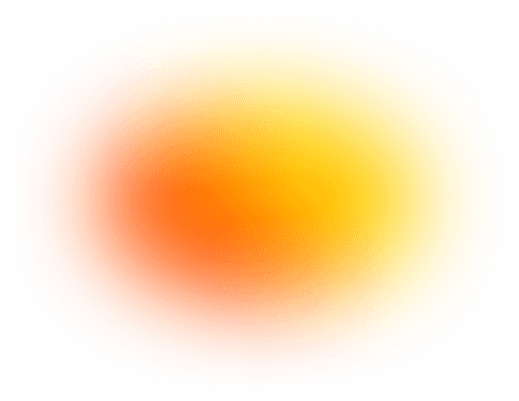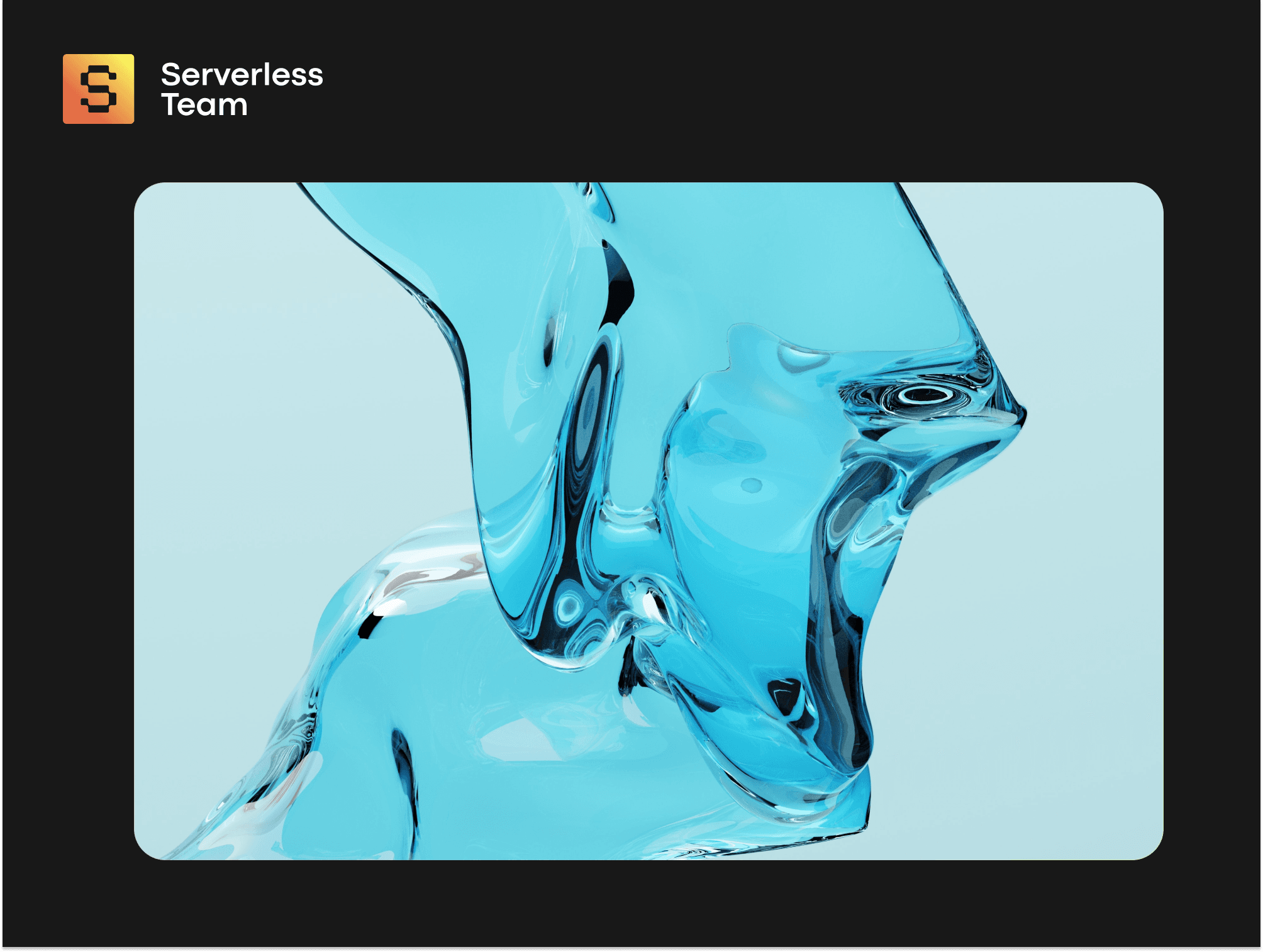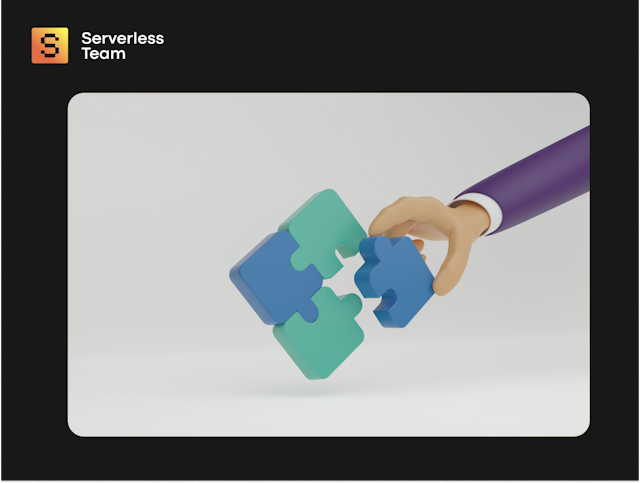Water leakage can lead to significant losses in resources and finances. Homeowners, businesses, and industries must detect and address leaks promptly to prevent wastage and potential damage. AWS IoT, combined with IoT water sensors, provides a reliable and efficient platform to implement water leak detection systems, ensuring real-time monitoring and prompt response. This article will explore how AWS IoT can be leveraged to create a robust water leak detection system, safeguarding your property and resources.

We take care of serverless development so you can focus on your business
Don't want to wait for our site launch? Let's talk about your idea right now.


Understanding IoT Water Sensors
To build a water leak detection system, we have to start from the beginning — with water detection sensors. At their core, IoT water sensors are compact devices designed to detect the presence of water in various environments. Whether it's a leaky pipe in the basement, a faulty appliance, or an unwelcome flood, these sensors act as the technological guardians, vigilantly monitoring for any signs of water intrusion.
How Do They Work?
IoT water leak sensors operate on a simple yet ingenious principle. Typically, they are equipped with metal probes or a moisture-sensitive material that triggers an alert when it comes into contact with water. Once moisture is detected, the sensor springs into action, sending a signal through your IoT network to notify you of the potential issue. This could be a text message, email, or an alert through a dedicated app, ensuring the owner is informed in real-time and can take immediate action to prevent further damage.
The Technology Behind the Scenes
Diving deeper, the technology that powers these water leak sensors is fascinating. Most IoT water sensors communicate viastandardn IoT protocols such as Wi-Fi, Zigbee, or Z-Wave, seamlessly integrating into your existing smart home ecosystem. They are often battery-powered, ensuring they remain operational even during power outages, and are designed to be low-energy to ensure long battery life.
Advanced water leak sensor IoT device models can offer additional features, such as temperature sensing, preventing pipes from freezing in colder climates. Some can even automatically shut off the water supply when a leak is detected, adding an extra layer of security and automation to your home's water management system.
Here, you can read more about AWS IoT architecture and how to develop AWS IoT solutions and AWS IoT examples.

Kyrylo Kozak
CEO, Co-founderGet your project estimation!

Choosing the Right IoT Water Sensor for AWS IoT-Based Water Leak Detection System
Building a water leak detection system with AWS IoT requires carefully selecting IoT water sensors. These sensors are crucial for accurately detecting water leaks and ensuring the system’s effectiveness. Here’s a comprehensive guide to help you choose the right IoT water sensor for your AWS IoT-based water leak detection system.
1. Compatibility with AWS IoT
Ensure the IoT water sensor you choose can seamlessly integrate with AWS IoT. Check the sensor’s documentation or manufacturer's website to confirm its compatibility with AWS services or if it requires any additional components for integration.
2. Type of Sensor
There are different types of water sensors available, each with specific use cases:
- Surface Sensors: Ideal for detecting water leaks on flat surfaces.
- Probe Sensors: Suitable for narrow spaces and specific target areas.
- Flow Sensors: Measure the flow rate of water in pipes, helping to detect anomalies.
Choose a sensor type that aligns with your specific water leak detection needs.
3. Accuracy and Sensitivity
Select a sensor with high accuracy and sensitivity to ensure it can detect even the most minor water leaks. This is crucial for preventing significant water damage and reducing false alarms.
4. Durability and Reliability
Opt for a sensor built to withstand the environmental conditions of the installation site, especially if it will be exposed to harsh weather or corrosive materials. Reliable performance over time is key to ensuring the longevity of your water leak detection system.
5. Power Consumption
Consider the power consumption of the sensor, especially if it will be battery-operated. Low-power sensors are ideal for long-term deployments where frequent battery replacements are not feasible.
6. Wireless Connectivity
Ensure the sensor supports wireless connectivity, such as Wi-Fi, Zigbee, or LoRa, to facilitate data transmission to AWS IoT. Check the sensor’s range and stability of the connection, especially in areas with potential interference.
7. Scalability
If you plan to scale your water leak detection system in the future, choose a sensor that can accommodate growth. Look for sensors that can be easily added to the network and managed through AWS IoT.
8. Cost-Efficiency
Balance the sensor’s cost with its features and durability. Investing in a slightly more expensive sensor might provide better performance and longer lifespan, ultimately offering better value for money.
9. Ease of Installation and Maintenance
Choose a sensor that is easy to install and requires minimal maintenance. This will save time and resources in the long run, especially for large-scale deployments.
10. Support and Warranty
Check the manufacturer’s support and warranty policies. Access to customer support and a solid warranty can be invaluable in case of any issues with the sensor.
By carefully considering these factors, you can select the right IoT water sensor for your AWS IoT-based water leak detection system, ensuring accurate detection, reliability, and scalability to meet your specific needs. Remember to continuously monitor and update your system for optimal performance and security.
Building a Water Leak Detection System with AWS IoT
Hardware and Sensor Setup
Choose water leak sensors that are compatible with AWS IoT. Ensure they are durable and suitable for the environment in which they will be placed. Connect these sensors to a microcontroller like Arduino or Raspberry Pi, which will act as the IoT device.
Connecting to AWS IoT Core
Register your IoT device in the AWS IoT Core console, ensuring secure communication through the necessary certificates and policies. Establish a connection between your IoT device and AWS IoT Core to start sending sensor data.
Data Processing with AWS Lambda
Utilize AWS Lambda to create serverless functions that process the data received from your sensors. Set up rules in AWS IoT Core to trigger this Lambda function upon receiving specific data (e.g., when moisture is detected).
Learn more about the use of AWS for IoT device management in our article on IoT Device Shadows.
Alerts and Notifications
Configure Amazon SNS (Simple Notification Service) to send alerts and notifications in case of a water leak detection. Use AWS Lambda to integrate SNS and send notifications via email, SMS, or any other preferred channel.
Data Storage and Analysis
Store the sensor data in an Amazon DynamoDB table for historical tracking and analysis. Utilize AWS services like Amazon QuickSight to visualize this data and gain insights, such as identifying patterns or areas more prone to leaks.
User Interface
Create a user-friendly dashboard using Amazon QuickSight or other AWS-compatible tools to display real-time data and alerts. This allows users to monitor the system and take immediate action when necessary.
Benefits of Using AWS IoT for Water Leak Detection
Implementing water leak detection systems with AWS IoT offers numerous advantages. AWS's robust infrastructure and an extensive array of tools and services make it an ideal choice for developing, deploying, and managing IoT applications focused on detecting and mitigating water leakage. Here are some key benefits:
Scalability and Flexibility
AWS IoT provides a scalable platform that can adapt to the varying needs of water leak detection systems, whether integrating a handful of sensors or scaling up to accommodate thousands across multiple locations. This ensures that as your needs grow or change, your system can effortlessly expand without significant modifications or downtime.
Real-Time Data and Rapid Response
With AWS IoT, you can achieve real-time monitoring of water systems. Sensor data is processed instantaneously, and alerts are sent out immediately upon detection of a leak. This rapid response capability is crucial in minimizing damage and waste, providing the ability to address issues as soon as they arise.
Robust Security
AWS IoT places a strong emphasis on security, ensuring that data transmitted from devices to the cloud is encrypted and secure. Fine-grained access control and regular security audits help safeguard sensitive data and maintain the integrity of the water leak detection system.
Seamless Integration
AWS IoT easily integrates with other AWS services, providing a cohesive environment to handle various aspects of water leak detection systems. For example, integration with AWS Lambda for serverless data processing, Amazon DynamoDB for data storage, and Amazon SNS for sending notifications creates a seamless workflow from data collection to user alerts.
Data Analysis and Visualization
AWS offers powerful tools for data analysis and visualization, such as Amazon QuickSight. These tools allow for the easy interpretation of data, helping to identify patterns, understand usage trends, and make data-driven decisions. For water leak detection, this means not only addressing current leaks but also proactively managing resources to prevent future issues.
Reliability and Availability
With AWS, you benefit from a network of data centers worldwide, ensuring your IoT system is highly available and reliable. This is crucial for water leak detection systems, where downtime could result in undetected leaks and significant damage.
Cost-Efficiency
AWS IoT operates on a pay-as-you-go pricing model, which means you only pay for the resources you use. This cost-efficiency is especially beneficial for small to medium-sized enterprises or individual homeowners looking to implement water leak detection without incurring substantial upfront costs.
Continuous Improvement and Support
AWS constantly updates and improves its services, ensuring that your water leak detection system is always running on the latest technology. Additionally, AWS provides extensive documentation and support, helping to troubleshoot issues and optimize your system for peak performance.
By using AWS IoT for water leak detection, you not only benefit from a secure, reliable, and scalable platform but also gain access to tools that enhance real-time monitoring, data analysis, and user response, ultimately contributing to the conservation of resources and protection of property.
Drawbacks of Using AWS IoT for Water Leak Detection
While AWS IoT offers numerous benefits for water leak detection systems, it's important to consider potential drawbacks to make an informed decision. Here are some challenges and limitations associated with using AWS IoT for this application:
Complexity and Learning Curve
AWS IoT provides many services and features, which can be overwhelming for beginners or small teams without prior cloud experience. The complexity of setting up, configuring, and managing an IoT solution on AWS may require additional time and resources, potentially leading to a steeper learning curve.
Cost Management
While AWS operates on a pay-as-you-go pricing model, costs can quickly escalate if services are not properly managed. Without careful monitoring and optimization, users might incur higher than anticipated expenses, especially when dealing with large volumes of data and numerous connected devices.
Dependency on Internet Connectivity
AWS IoT relies on internet connectivity to transmit data from sensors to the cloud. In areas with unreliable internet access or during connectivity outages, the system may fail to report water leaks in real time, potentially leading to delayed responses and increased damage.
Data Privacy and Security Concerns
Although AWS provides robust security measures, the transmission and storage of data in the cloud may raise privacy and security concerns, particularly for sensitive information. Users must comply with relevant regulations and best practices to safeguard data.
Limited Customization of Hardware
When using AWS IoT, there may be limitations in terms of compatible hardware and sensors for water leak detection. Users might find themselves constrained to specific devices supported by AWS IoT, potentially limiting customization and flexibility in hardware selection.
Potential for Vendor Lock-In
Investing heavily in AWS IoT services and tools might lead to vendor lock-in, making it challenging to migrate to another platform in the future. This dependency could limit flexibility and negotiating power, as well as increase the risk associated with potential service disruptions or changes in AWS's pricing structure.
Overhead of Managing and Updating Devices
As with any IoT system, managing and updating many connected devices can be time-consuming and complex. Ensuring that all devices are running the latest firmware and software is crucial for security and performance but may require significant resources.
Limited Support for Legacy Systems
Organizations with existing water leak detection systems might struggle to integrate legacy hardware and software with AWS IoT. Upgrading or replacing outdated components to ensure compatibility with AWS services can be costly and labor-intensive.
Our Team as Your AWS IoT Solutions Partner
When integrating IoT solutions, especially those as crucial as water leak detection, you want a partner who understands the technology and appreciates the real-world implications of these systems. That's where our team comes in.
Our team, composed of certified AWS experts, brings a wealth of experience and a proven track record of successful implementations. We have been at the forefront of IoT innovation, helping businesses and homeowners alike harness the power of AWS IoT to secure their premises from water damage.
Understanding that no two setups are alike, we pride ourselves on delivering and building proof-of-concept IoT solutions with AWS. Whether integrating with existing smart home systems or designing a robust IoT infrastructure for industrial settings, our team ensures a seamless integration process, from the initial consultation to implementation and beyond.
Summary
In conclusion, while AWS IoT offers a robust platform for developing water leak detection systems, it is important to weigh the potential drawbacks, such as complexity, cost management challenges, and dependency on internet connectivity. Thorough planning and consideration of these factors will help ensure the successful implementation of a water leak detection system that meets your needs and requirements.





